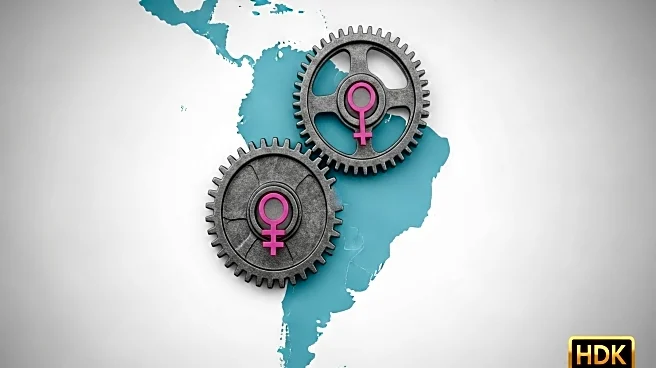Rapid Read • 8 min read
A new working paper from the International Monetary Fund's Western Hemisphere Department, in collaboration with the Hong Kong University of Science and Technology, explores the effects of migration on gender inequality in Latin America and the Caribbean. The study, authored by Cassie Chen Xiang and Manuk Ghazanchyan, reveals that migration exacerbates existing gender disparities in the workforce. Despite progress in female labor force participation since the 1990s, the region still faces significant gender gaps. The paper highlights that emigration tends to reduce labor force participation, particularly among women, while immigration affects male participation differently, often complementing rather than competing with local men.
AD
The findings of the study are crucial for understanding the complex dynamics of migration and gender inequality in Latin America. As migration continues to reshape labor markets, it poses challenges for women's economic empowerment, a key driver of growth. The study suggests that migration can deepen gender disparities, affecting women's participation in the workforce more than men's. This has implications for policy-making, as governments need to address these gendered impacts to ensure equitable growth and development. By investing in women's education and vocational training, countries can mitigate the negative effects of migration and promote gender equality.
The study calls for targeted policy interventions to address the gendered impacts of migration. Governments are urged to invest in women's education and vocational training to strengthen their labor market attachment. Programs in financial literacy and entrepreneurship could help women in remittance-receiving households turn inflows into productive ventures. Additionally, inclusive labor protections are necessary to shield both migrants and natives from exploitation and job losses. These measures can help prevent migration from exacerbating gender inequalities and ensure that it becomes a force for narrowing the gender gap in labor participation.
Migration is portrayed as both a disruptor and a potential enabler. While remittances can ease household burdens, they may also reduce women's participation in the workforce. Immigration can create competition but also complement native workers and expand demand in the longer run. Understanding these dynamics is essential for Latin America and the Caribbean, where growth and equity hinge on bringing more women into the workforce. The study emphasizes the need for adaptable interventions that can turn migration into an opportunity for gender equality.
AD
More Stories You Might Enjoy











